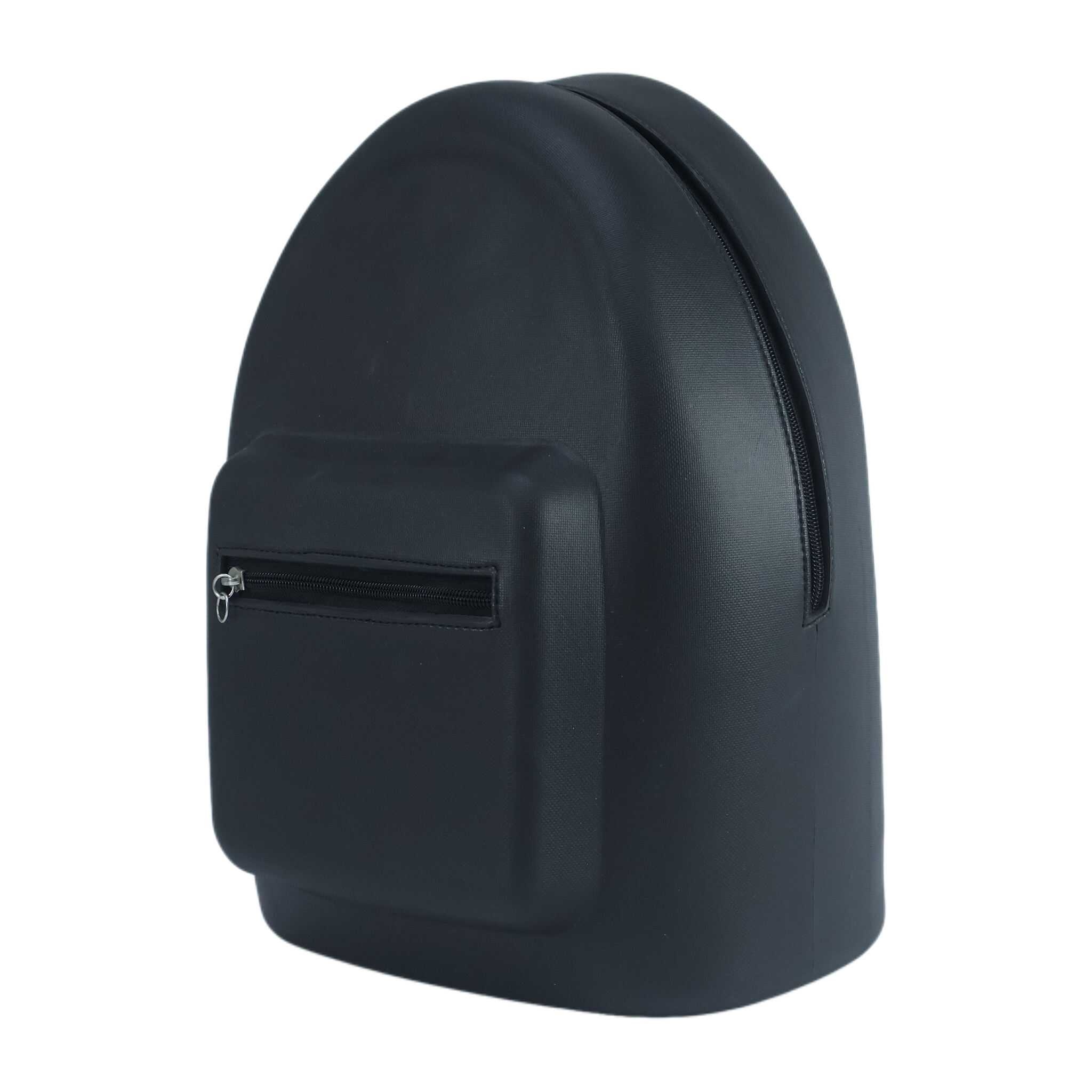Crocs shoes have revolutionized the footwear industry with their unique design, exceptional comfort, and versatility that appeals to millions of users worldwide. These lightweight foam clogs have become a staple in many wardrobes, from healthcare professionals who spend long hours on their feet to casual wearers who prioritize comfort and convenience. Understanding proper cleaning and care techniques for your Crocs shoes ensures they maintain their appearance, functionality, and longevity while providing continued comfort and support.

The proprietary Croslite material used in manufacturing these popular shoes requires specific care methods to preserve its unique properties. This closed-cell resin material provides the signature cushioning and antimicrobial benefits that make Crocs shoes so comfortable and hygienic. However, improper cleaning techniques can damage the material, cause discoloration, or reduce the shoes' lifespan significantly.
Understanding Crocs Material and Construction
Croslite Foam Properties
The foundation of every pair of Crocs shoes lies in the innovative Croslite material, a proprietary closed-cell resin that offers remarkable benefits for users. This lightweight foam provides exceptional cushioning while maintaining structural integrity under various conditions. The material's closed-cell structure prevents water absorption, making it naturally resistant to odors and bacterial growth, which explains why healthcare professionals and food service workers frequently choose these shoes.
Croslite material also exhibits excellent flexibility and durability, allowing the shoes to maintain their shape even after extended wear. The material's unique composition enables it to soften slightly with body heat, conforming to the wearer's foot shape for personalized comfort. Understanding these properties helps users appreciate why specific cleaning methods work better than others for maintaining their footwear.
Design Elements and Ventilation
The iconic design of Crocs shoes includes strategically placed ventilation holes that serve multiple purposes beyond aesthetic appeal. These holes provide essential airflow to keep feet cool and dry during extended wear periods. The ventilation system also allows for easy drainage when the shoes get wet, making them ideal for water activities or environments where spills are common.
The heel strap design offers versatility in wearing styles, allowing users to secure the shoes for active pursuits or pivot the strap forward for easy slip-on convenience. This adjustable feature requires special attention during cleaning to ensure the pivot mechanism remains functional and smooth. The textured footbed provides additional grip and massage-like comfort while walking, but these textured surfaces can accumulate dirt and debris over time.
Essential Cleaning Supplies and Preparation
Recommended Cleaning Materials
Effective cleaning of Crocs shoes requires specific materials that work well with the Croslite foam without causing damage or discoloration. Mild soap solutions using dish soap or gentle laundry detergent provide excellent cleaning power without harsh chemicals that could degrade the material. Avoid bleach, strong acids, or abrasive cleaners that can permanently damage the foam structure.
Soft-bristled brushes, such as old toothbrushes or specialized shoe brushes, offer the perfect balance of cleaning power and gentleness for scrubbing away stubborn dirt and stains. Microfiber cloths work exceptionally well for wiping down surfaces and removing cleaning residue without scratching the material. For deep cleaning sessions, having access to warm water and a large basin or sink makes the process more efficient and thorough.
Pre-Cleaning Assessment
Before beginning any cleaning process, conduct a thorough assessment of your Crocs shoes to identify specific areas that require attention. Check for embedded dirt in the ventilation holes, which often accumulates from outdoor activities or workplace environments. Examine the footbed for signs of staining, wear patterns, or areas where foot oils have created discoloration.
Pay special attention to the heel strap mechanism, as this area can collect debris that interferes with proper function. Look for any cracks, tears, or areas where the material appears to be degrading, as these may require special care during cleaning to prevent further damage. Document any existing damage to track whether cleaning methods are helping or potentially causing additional issues.
Step-by-Step Basic Cleaning Process
Initial Rinse and Preparation
Begin the cleaning process by removing any loose debris from your Crocs shoes using a soft brush or cloth to prevent grinding dirt into the material during washing. Rinse the shoes under cool to lukewarm water to remove surface dirt and prepare the material for deeper cleaning. Avoid using hot water, as excessive heat can cause the Croslite material to become too soft and potentially lose its shape.
Pay particular attention to the ventilation holes during the initial rinse, as these areas often trap small stones, sand, or other debris from outdoor activities. Use gentle water pressure to flush out any accumulated materials without forcing debris deeper into the holes. This preliminary cleaning step makes the subsequent washing process more effective and prevents abrasive particles from scratching the shoe surface.
Soap Application and Scrubbing
Create a mild soap solution using warm water and a small amount of gentle detergent, ensuring the mixture provides adequate cleaning power without being overly concentrated. Apply the soap solution to all surfaces of the Crocs shoes, paying special attention to heavily soiled areas or stubborn stains that require additional treatment. Use circular motions with a soft-bristled brush to work the soap into the material, being gentle but thorough in your approach.
Focus on the textured footbed area, where skin oils and dirt tend to accumulate over time, using the brush to work soap into all the small crevices and raised surfaces. Clean the heel strap thoroughly, including the pivot point where dirt and oils can interfere with smooth operation. For ventilation holes, use a smaller brush or cotton swab to ensure complete cleaning without damaging the hole edges.
Advanced Cleaning Techniques for Stubborn Stains
Grease and Oil Stain Removal
Grease and oil stains on Crocs shoes require specialized treatment approaches that target the specific properties of these substances without damaging the Croslite material. Dish soap, specifically formulated to cut through grease, works exceptionally well for these types of stains when applied directly to the affected area and allowed to sit for several minutes before scrubbing. The degreasing agents in dish soap break down oil-based stains more effectively than regular laundry detergents.
For particularly stubborn grease stains, create a paste using baking soda and water, applying it to the stained area and allowing it to sit for 15-20 minutes before scrubbing with a soft brush. The alkaline properties of baking soda help neutralize acidic components in many stains while providing gentle abrasive action. Rinse thoroughly after treatment to remove all residue and prevent any remaining cleaning agents from attracting additional dirt.
Scuff Marks and Discoloration
Scuff marks on Crocs shoes often respond well to gentle abrasion using a magic eraser or melamine foam, which removes surface-level marks without penetrating deeply into the material. Dampen the magic eraser slightly and gently rub the scuffed area using light pressure and circular motions until the mark begins to fade. Be cautious not to over-scrub, as excessive pressure can remove material and create a thin spot in the shoe.
For general discoloration caused by prolonged sun exposure or normal wear, a mixture of white vinegar and water can help restore some of the original color brightness. Apply the solution with a cloth and allow it to sit for a few minutes before rinsing thoroughly. The mild acidity of vinegar helps break down mineral deposits and surface stains that cause dullness in the material appearance.
Proper Drying and Storage Methods
Air Drying Techniques
Proper drying techniques are crucial for maintaining the structural integrity and appearance of your Crocs shoes after cleaning. Always air dry your shoes at room temperature, avoiding direct sunlight or heat sources that can cause the Croslite material to warp, crack, or become brittle. Position the shoes in a well-ventilated area where air can circulate freely around all surfaces, including through the ventilation holes.
Place the shoes upside down or at an angle that allows any remaining water to drain out completely, preventing moisture from being trapped inside where it could lead to odor development or material degradation. The natural antimicrobial properties of Croslite material help prevent bacterial growth, but proper drying ensures optimal performance of these protective characteristics.
Long-Term Storage Considerations
When storing Crocs shoes for extended periods, ensure they are completely clean and dry to prevent any residual dirt or moisture from causing damage during storage. Store the shoes in a cool, dry location away from direct sunlight, extreme temperatures, or areas with high humidity that could affect the material properties over time. Avoid storing heavy objects on top of the shoes, as prolonged pressure can cause permanent deformation.
Consider using shoe trees or stuffing the shoes with newspaper to help maintain their shape during long-term storage, especially for styles that may be prone to collapsing or losing their form. Periodically check stored shoes for any signs of material degradation or pest activity, particularly if they are stored in basements, attics, or other areas where conditions may fluctuate significantly.
Preventive Care and Maintenance Tips
Daily Care Practices
Implementing daily care practices significantly extends the life and appearance of your Crocs shoes while reducing the frequency of deep cleaning sessions. After each wear, quickly rinse off any visible dirt or debris using cool water, which takes only seconds but prevents accumulation of materials that become harder to remove over time. This simple practice is particularly important for healthcare workers or others who wear their shoes in potentially contaminated environments.
Allow shoes to air out between wears, especially if your feet tend to perspire heavily or if you wear the shoes for extended periods. Even though Croslite material has antimicrobial properties, providing adequate drying time between uses ensures optimal performance of these natural protective features. Rotate between multiple pairs if possible, giving each pair adequate time to dry and recover between wears.
Environmental Protection Strategies
Protecting your Crocs shoes from environmental factors that can cause premature aging or damage requires awareness of potential hazards and proactive measures. Limit prolonged exposure to direct sunlight, which can cause fading and make the material more brittle over time. When wearing shoes outdoors in sunny conditions, consider the cumulative effect of UV exposure and take steps to minimize unnecessary sun exposure when possible.
Be mindful of chemical exposure in workplace or home environments, as certain substances can cause permanent staining or material degradation. Industrial chemicals, strong cleaning products, and even some personal care items can react negatively with Croslite material. When working with potentially harmful substances, consider using protective covers or choosing alternative footwear for those specific tasks.
Troubleshooting Common Cleaning Issues
Persistent Odor Problems
While Crocs shoes are naturally resistant to odor development due to their antimicrobial material properties, persistent odors can occasionally occur, particularly with heavy use or in challenging environments. Address odor issues by soaking the shoes in a solution of water and white vinegar for 15-20 minutes, followed by thorough rinsing and air drying. The acidic properties of vinegar help neutralize odor-causing bacteria and break down organic compounds that contribute to unpleasant smells.
For severe odor problems, create a paste using baking soda and water, apply it to the interior surfaces of the shoes, and allow it to sit overnight before rinsing thoroughly. Baking soda naturally absorbs odors and moisture while providing gentle cleaning action. Ensure complete removal of all baking soda residue, as remaining particles can create a gritty feeling or attract additional dirt.
Color Restoration Challenges
Faded or discolored Crocs shoes present unique challenges since the color is integral to the Croslite material rather than applied as a surface coating. While complete color restoration may not be possible, several techniques can help improve appearance and slow further fading. Regular cleaning with gentle methods helps maintain existing color by removing surface contaminants that can make shoes appear duller than they actually are.
For minor discoloration, try using a mixture of lemon juice and water applied with a soft cloth, followed by immediate rinsing to prevent the acid from sitting on the material too long. The natural bleaching properties of lemon juice can sometimes help even out minor color variations, though results vary depending on the specific type and extent of discoloration present.
FAQ
Can I put my Crocs shoes in the washing machine?
While some people successfully wash their Crocs shoes in washing machines, this method is not recommended by the manufacturer and can potentially damage the shoes or washing machine. The agitation and spin cycles can cause the shoes to become misshapen, and the heat from some wash cycles may damage the Croslite material. Additionally, the shoes can bang against the machine drum, potentially causing damage to both the footwear and the appliance. Hand washing with mild soap and water remains the safest and most effective cleaning method for maintaining your investment in quality footwear.
How often should I clean my Crocs shoes?
The cleaning frequency for your Crocs shoes depends largely on usage patterns and environmental conditions. For daily casual wear, a quick rinse after each use and a thorough cleaning weekly or bi-weekly usually suffices to maintain good hygiene and appearance. Healthcare workers or others who wear their shoes in demanding environments may need to clean them daily or after each shift to maintain proper sanitation standards. Signs that indicate immediate cleaning is needed include visible dirt accumulation, odor development, or any contamination from workplace hazards.
What should I do if my Crocs shoes develop cracks or tears?
Small cracks or tears in Crocs shoes can sometimes be repaired using appropriate adhesives designed for foam materials, though the effectiveness depends on the location and extent of the damage. Clean the damaged area thoroughly before attempting any repairs, and allow it to dry completely. For significant damage or cracks in stress-bearing areas, replacement may be more practical than repair. Regular inspection during cleaning helps identify potential problems early when repair options are more viable and before safety becomes a concern.
Are there any cleaning products I should absolutely avoid?
Several types of cleaning products can cause permanent damage to Crocs shoes and should be avoided completely. Bleach and chlorine-based cleaners can cause discoloration and material degradation. Strong acids, alkalis, and solvent-based cleaners can break down the Croslite material structure. Abrasive cleaners or scrubbing pads can create surface scratches and remove material. Oil-based products may be absorbed into the material and are difficult to remove. Always test any new cleaning product on an inconspicuous area first, and when in doubt, stick to mild soap and water for safe, effective cleaning results.







